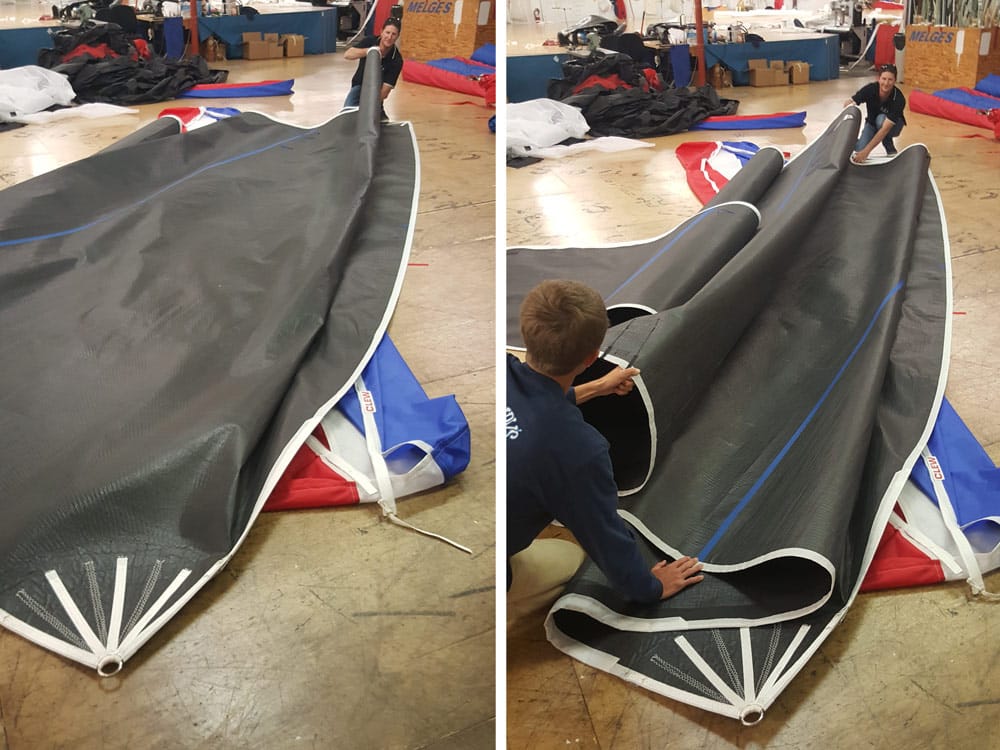
Larger overlapping genoas are always folded so the luff is stacked together making the bowman’s life easier. The person at the tack must first take a “cheater” fold. To do this, the person at the clew holds tight or steps on the clew while the person at the tack takes a standard fold, resulting in a triangle shape as the first fold rather then the normal rectangle.
After this first “cheater fold,” flake normally, with both ends folded at the same sizes. The person at the tack must keep the entire luff stacked together while the person at the clew works their way to the tack.
If the luff starts working aft, make the folds at the tack end a little larger or the folds at the clew end a little smaller. If the luff starts working forward off the stack, make the folds at the tack end a little smaller and the folds at the clew end a little larger.
For high-clewed genoas or jibs, such as jib tops or cruising sails, the person at the tack can take two “cheater folds” to keep the luff stacked.
Whether the sail is in a long zip bag or a short fold bag, I like to roll the folded sail from tack to the clew. This can make the bowman’s life a little harder, but I believe it is better for the sail, as the leech will roll out flat as you roll, rather then getting crushed together.
There are two ways to fold non-overlapping headsails-luff folded and leech folded. If the sail will always be kept in a longer bag, laid out down below or in a trailer box, fold the sail down the luff to help the bowman. For this, simply follow the same steps as with an overlapping genoa. You may have to make some folds slightly larger or slightly smaller to accommodate battens.
It is common to “brick” non-overlapping jibs in half or thirds after folding. Thus the most common fold is the leech fold. For this, both ends fold at the same size, starting at the same time. The person at the clew keeps the entire leech stacked on top of itself while the person at the tack works their way to the clew.









